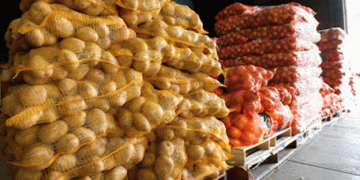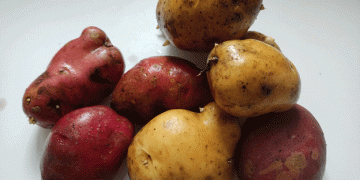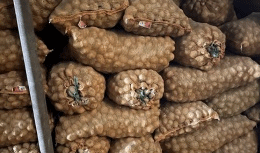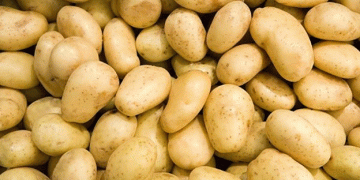British potato growers can create a clean start to crops by switching the foundation of their broadleaved weed control plans to Shark (carfentrazone-ethyl). But, as with diquat, timing is key to success.
Capable of controlling weeds typical of a broad range of potato-growing soils and regions, Shark is highly effective when used either alone or in in a mix with other residual herbicides when applied just prior to crop emergence, says Jeff Fieldsend, Commercial Technical Manager at FMC Agro UK.
Timing important
It is recommended that Shark is applied at 5-10% emergence (5% emergence on early varieties and 10% emergence on maincrop varieties) but operators should be cautious when it comes to timings, warns Jeff.
“While application at 5-10% emergence is attractive in terms of timing flexibility, it is best to use the product as soon as the weed flush has developed and not risk applying too late, crops are moving very quickly around this time and late applications can knock them,” Jeff Fieldsend says.
Agronomist Rob Ramsey reports: “Shark has been a reliable diquat replacement for my customers, and we’ve seen good results from well-timed applications, with the crop coming back strongly even when 5-10% has emerged, so there is a fair window of application, much like there was with diquat.”
Trials conducted by FMC and AHDB in the UK have proved that Shark is extremely crop-safe when applied at the correct time. However, if application is delayed onto emerged potato plants greater than 5-10%, necrotic spotting will occur, which will be quickly outgrown leading to no long-term effects on vigour or yield.
Effective on wide range of broadleaved weeds

“Shark is particularly effective on a wide range of broadleaved weeds, notably polygonum species, cleavers, annual nettle and speedwells up to the young plant stage when applied at 0.33L/ha rate, with excellent activity being observed within 2-3 days following application,” Jeff adds.
“It is suited to use with all potato varieties and crop types, including both ware and seed, and in terms of application has no buffer zone requirement, and is rainfast in an hour.”
A further opportunity to apply Shark onto non cropped land prior to planting is also a tried and tested method of tidying up both grass and broadleaved weeds, allowing for a clean start.
“Mixing Shark with glyphosate allows growers to get on top of difficult weeds that glyphosate does not control when used alone,” advises Jeff. “There is real improvement in the control of annual nettle, cranesbill and willowherbs with the mix and can allow for lower rates of glyphosate to be used. A one-month interval following application exists when using this mix prior to planting a crop but this is not an issue in most situations.”
Agronomist’s viewpoint
New fields rented by growers as clean potato land bring new weed management challenges, points out Rob Ramsay, who provides agronomy on around 160ha of fresh and processing potato crops as part of 1,600ha he crop-walks in north Lincolnshire.
“We’re often up against unknowns when dealing with management of new land, in terms of weed burdens among other factors, so beginning with clean land is important.
“While it doesn’t have any grassweed activity as such, it picks up on those weeds that residual chemistry is a bit weaker on, and gives us a good, clean start to the crop, helping it to get away strongly. And if the weed burden is low, there is scope to tweak the rate a little, perhaps reducing it to 0.3 or even 0.25 litres/ha if dealing with only small weeds, which is often the case.
“Potato land rents aren’t cheap, so it’s important to invest what’s necessary to get maximum yields. Add a residual such as Artist (flufenacet + metribuzin) or Praxim (metobromuron), plus perhaps Defy (prosulfocarb), for the addition of grassweed and further broadleaved weed control, and we have a good belt-and-braces approach for a clean start to the crop.”






